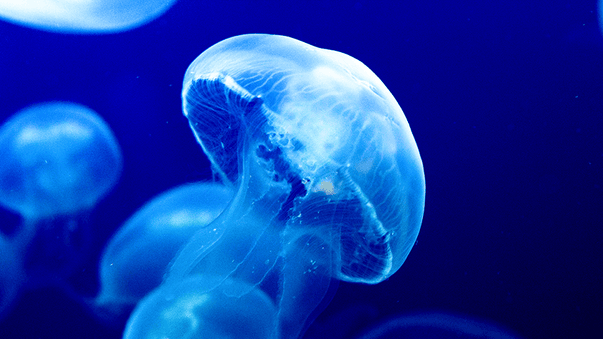Did Scientists Find the Engine of Consciousness?

By stimulating a brain region called "central lateral thalamus," scientists led by University of Wisconsin brain researchers caused anesthetized monkeys to suddenly become awake and alert (see below). This suggests that this specific brain region acts like an engine of consciousness.
“So, you have this loop between the deeper layers of the cortex and the central lateral thalamus, which in a sense acts like an engine,” said research leader Yuri Saalmann in a University of Wisconsin press release. “We can now point to crucial parts of the brain that keep this engine running and drive changes in the cerebral cortex that affect your awareness, the richness of your conscious experience.”
“This fascinating result is providing new clues about the brain and how it produces conscious awareness - insights that could potentially lead to therapies for patients trapped in a coma,” notes science writer George Dvorsky in Gizmodo.
“Theories of consciousness have suggested that central lateral thalamus plays a key role in keeping the cortex ‘awake,’” MIT neuroscientist Earl Miller told Gizmodo. “This study provides important evidence supporting that theory.” According to Miller, the research “gives us new insights into the circuitry and brain dynamics that produce consciousness.”
Stimulating Consciousness in Monkey Brains
Scientists led by University of Wisconsin brain researchers have found that a small amount of electricity delivered at a specific frequency to a particular point in the brain will snap a monkey out of even deep anesthesia. This points to a circuit of brain activity key to consciousness and suggests potential treatments for debilitating brain disorders.
The research results, published in Neuron, suggest that a particular loop of activity in the central lateral thalamus of the brain is crucial to consciousness.
Nanomaterial Devices Mimic Human Vision Cells
Researchers at University of Central Florida have shown that, by combining two promising nanomaterials into a new superstructure, they could create a nanoscale device that mimics the neural pathways of brain cells used for human vision.
The device is described in a paper published in Science Advances. According to the researchers, it is a first step toward developing brain-inspired neuromorphic computers. Such computers can simultaneously process and memorize information.
The researchers are persuaded that, at some time in the future, this invention may help to make robots that can think like humans.
Artificial Tissue Patch to Repair the Heart
Bioengineers at Trinity College Dublin have developed a prototype patch that does the same job as crucial aspects of heart tissue. Their work essentially takes us one step closer to being able to mend a broken heart.
The patch is described in a research paper published in Advanced Functional Materials. It withstands the mechanical demands and mimics the electrical signaling properties that allow our hearts to pump blood rhythmically round our bodies.
The patch withstood repeated stretching, which is a dominant concern for cardiac biomaterials. And it showed good elasticity, to accurately mimic that key property of heart muscle.
Foot-and-Mouth-Disease Virus Helps Target Cancer
Researchers at Queen Mary University of London have identified a peptide that targets another protein found at high levels on the surface of the majority of pancreatic cancer cells. The peptide is a protein fragment taken from the foot-and-mouth-disease virus.
Researchers used the peptide to carry a highly potent drug, called tesirine, to pancreatic cancer cells. A study is published in Theranostics reports.
When laboratory mice with pancreatic cancer tumors were treated with the drug and peptide combination, the tumors were completely killed.
Bio-Ink 3D-Prints Tissue for Regenerative Medicine
Biomedical engineers at Rutgers University have developed a 'bio-ink' for 3D printed materials. It could serve as scaffolding to grow human tissues that repair or replace damaged ones in the body.
The bioengineered tissues produced by the new bio-ink are described in a paper published in Biointerphases.
They show promise in regenerative, precision, and personalized medicine. They also show promise in product development and basic research.
Chip Models Brain Interface with Bloodstream
Researchers led by Georgia Institute of Technology have found a way of studying the blood-brain barrier more closely with the intent of helping drug developers do the same.
In a study published in Nature Communications, the researchers cultured the human blood-brain barrier on a chip. And they recreated its physiology more realistically than predecessor chips.
In testing related to drug delivery, nanoparticles moved through the blood-brain-barrier to what would be inside the human brain in a natural setting.
More Articles
Don't miss a beat! In our Pulse Newsletter, Thrivous curates the most important news on health science and human enhancement, so you can stay informed without wasting time on hype and trivia. It's part of the free Thrivous newsletter. Subscribe now to receive email about human enhancement, nootropics, and geroprotectors, as well as company news and deals.
Read more articles at Thrivous, the human enhancement company. You can browse recent articles in Thrivous Views. See other Pulse Newsletter articles. Or check out an article below.
-
Does Prevagen Work? And What Is Apoaequorin?
In 2007, Quincy Bioscience started selling Prevagen, a supplement containing apoaequorin. Later, they added vitamin D to the formula. And ...
-
Clinical Trial Validates CRISPR Cancer Immunotherapy
The highly anticipated results of a small clinical trial (see below) show that treating cancer patients with a CRISPR-engineered version ...


